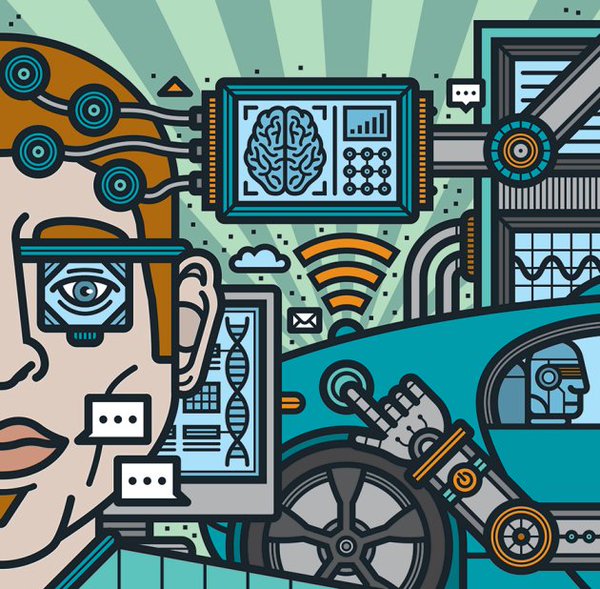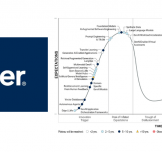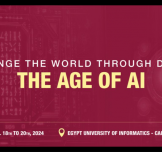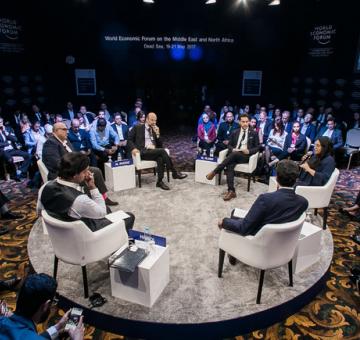The 3 Big Technologies for the Next Decade: Genomics, Nanotech, Robotics

Many people take it as an article of faith that technology is changing the world, but in his new book, The Rise and Fall of American Growth, economist Robert Gordon says otherwise. He points out—accurately—that productivity, which surged between 1920 and 1970, has stalled since then and is likely to stay that way.
The reason, he argues, is that earlier technologies, such as electricity, the internal combustion engine and antibiotics, had far ranging effects while digital technology is fairly narrow by comparison. It’s a serious argument and he may well very be right, but it also fails to take into account important second order effects.
In The Singularity Is Near, computer scientist and inventor Ray Kurzweil explained that the endpoint of digital technology isn’t better devices and apps, but new technologies such as genomics, nanotechnology and robotics. Today, these are just beginning to have an impact, but over the next decade they will determine whether Gordon is right or not.
Unlocking a More Powerful Code
Silicon Valley engineers are famous for their skills with computer code. Yet the exponential advance of computing power has enabled scientists to begin to unravel the mysteries of an even more important mystery, the genetic code. This is the new field of genomics and it’s already showing great promise.
The first area where it’s having an impact is on cancer. Mapping the cancer genome is enabling new, more targeted cancer therapies that treat patients based on their cancer’s genetic makeup rather than just on where the tumor is located, like in the prostate or the breast. That, combined with new immunotherapies are giving hope that a cure to cancer may soon be within reach.
Beyond that, a new technique called CRISPR allows scientists to actually edit DNA sequences so that they can, for example, disable key genes in an HIV virus, deactivate others gone awry in an autoimmune disease like Multiple Sclerosis or reprogram yeast DNA to create petrochemicals like plastics.
Genomics is still a very young science, little more than a decade old, so we are really just beginning to scratch the surface. But early indications are that it will change our conceptions about what is possible. Antibiotics were truly transformative, but their effect was limited to infections diseases. Genomics has the potential to go much further than that.
Exploring Technology “At the Bottom”
Just a few days after Christmas in 1959, Richard Feynman stepped up to the podium at the annual meeting of the American Physical Society to give a talk entitled, There’s Plenty of Room at the Bottom. Within the next hour, speaking at roughly a high school level, he created a new science, which we now call nanotechnology.
Today, it is leading to a wide array of new physical materials like quantum dots, which are revolutionizing electronic devices, from more efficient computers to cheaper and sharper TVs. Graphene, another nanotechnology material, can be used to make a wide variety of products, from super-strong, but incredibly light, prosthetics to superconducting wires.
To understand the incredible impact of nanotechnology, let’s look at just one area, solar cells. While today solar power is struggling to be viable, in the future our energy could cost far less—about half the current price in ten years and merely one fifth in 20. Considering that energy makes up about 8% of GDP, that has the potential to make a vast impact on productivity.
For most of history, we had to settle with the materials nature gave us. Now, we’re on the verge of being able to design materials with the properties that we want. Like genomics, nanotechnologies like quantum dots and graphene have only become viable recently, so there really is no telling what the future holds.
The Rise of the Robots
The first industrial robots hit the assembly line at a General Motors plant in 1961, performing tasks like welding bodies together. In the decades that followed, robots did an increasing share of factory work, but always alone. They were too dangerous to work around people. In 1969, the first ATM’s were installed and robots began replacing clerical workers instead of factory workers.
Today, we’re increasingly seeing robots around us. From Baxter, a robot cheap enough for smaller companies to buy, but safe enough to collaborate with human workers, to the Roomba robots that can intelligently vacuum floors in the home, to the software robots that automate travel planning, they’ve become central to modern life.
To understand the future of robotics, the place to look is the military, where the US has invested billions. Currently, the US deploys 11,000 drones and 12,000 ground robots to do jobs like bomb removal and carrying equipment. Soldiers are already forming emotional bonds with these robots, giving them names and even risking their lives to save them.
We’re also seeing robots becoming increasingly integrated into civilian life. Drones are being deployed commercially to survey crops and Amazon is looking to roll out a drone delivery service. IBM’s Watson is helping doctors to diagnose patients. As the technology advances further, robots will be taking over even more human jobs, like driving delivery trucks.
Innovation is Never a Single Event
Gordon makes a serious argument and deserves to be taken seriously. Except for a relatively brief period in the late 90’s, we’ve seen little measurable benefit from digital technology. Certainly, the impact has been nothing like earlier innovations like electricity, the internal combustion engine antibiotics or even indoor plumbing.
Yet perhaps he’s is being a little too quick to judge. Faraday invented the electrical dynamo in the 1830’s and the internal combustion engine was developed in the 1870’s. Still, major impact of these occurred between 1920 and 1970. In the interim, further technologies, like steering, brakes, roads, home appliances and, yes, computers needed to be developed.
The truth is that innovation is never a single event. It requires the discovery of new insights, the engineering of solutions around those insights and then the transformation of an industry or field. Technology does not produce progress by itself, we need to find important problems for it to solve and then must change how we work in order to take advantage of it.
So while smartphone apps are cool and add convenience to our lives, the real impact of digital technology lies in front of us, when second order technologies are applied to completely new problems.
This article was previously published on Innovation Excellence.




























































EgyptInnovate site is not responsible for the content of the comments